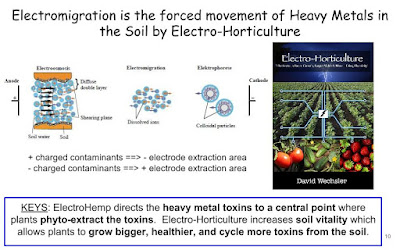Phytomining: Plant biomass containing accumulated heavy metals can be combusted to get energy and the remaining ash is considered as ‘‘bio-ore’’.
This bio-ore can be processed for the recovery
An advantage of phytomining is the sale of energy from combustion of the biomass (Anderson et al., 1999). According to a field experiment conducted by Meers et al. (2010), cultivation of energy maize in the Campine region in Belgium and the Netherlands could result in the generation of
- 30000–42 000 kWhel+th of renewable energy per hectare.
- By assuming the substitution of coal powered power plant, this would imply a cut of up to 21 tons ha1 y1 CO2.
- Processing bio-ores contributes less SOx emissions to the atmosphere because of their low sulfur contents.
Thus phytomining is an environment- and ecofriendly option as compared to the conventional extraction methods.
However, the commercial viability of phytomining depends on many factors like the
efficiency of phytoextraction and current market value of the processed metals. Phytomining has been commercially used for Ni and it is believed that it is less expensive than the conventional extraction methods. Using Alyssum murale and Alyssum corsicum, one can grow biomass containing 400 kg Ni ha1 with production costs of $250–500 ha1 . Considering Ni price of $40 kg1 (in 2006, Ni metal was trading on the London Metal Exchange at more than $40 kg1 ), Ni phytomining has become a highly profitable agricultural technology (crop value = $16 000 ha1 ) for Ni-contaminated or mineralized soils (Chaney et al., 2007). The enforcement of more strict legislation for limiting environmental pollution would make bio-based mining more attractive (Siddiqui et al., 2009).

Source: https://www.researchgate.net/profile/Ezzat_Khan/publication/235880244_Phytoremediation_of_heavy_metals-Concepts_and_applications/links/0f317534f5734634b5000000.pdf
MOhemp Energy: Hazardous Waste Escapes in Flood: The Bridgeton and Westlake Landfills have flooded and the toxins are escaping, a perfect example of places that natural Phytoremediat...































